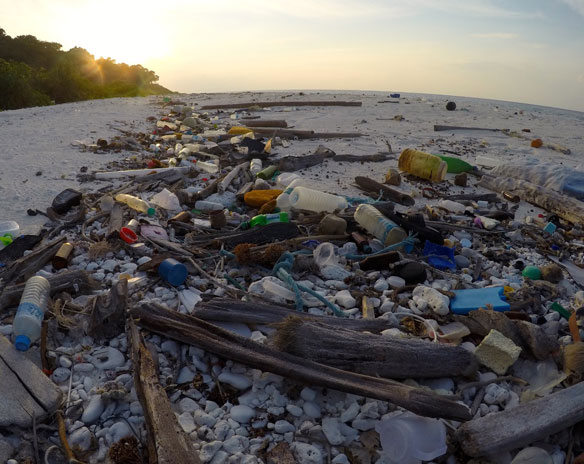
Although inhabited and remote, South Sentinel island is covered with plastic! South Sentinel, Andaman Islands, Bay of Bengal. Captions and Photo: © SAF — Coastal Care
Excerpts;
Experts say human impact on Earth so profound that Holocene must give way to epoch defined by the radioactive elements dispersed across the planet by nuclear bomb tests, although an array of other signals, including plastic pollution, soot from power stations, concrete, and even the bones left by the global proliferation of the domestic chicken were now under consideration…
Read Full Article, Guardian UK (08-29-2016)
All That Plastic In The Ocean Is Going To Leave Behind Fossils; Huffington Green (08-29-2016)
Plastic pollution has become so ubiquitous it may serve as evidence that humanity has launched the planet into a new geological epoch…
New map shows alarming growth of the human footprint, Science Daily (08-26-2016)
Plastic Pollution: “When The Mermaids Cry: The Great Plastic Tide,” Coastal Care (©-2009)
For more than 50 years, global production and consumption of plastics have continued to rise. An estimated 300 million tons of plastics were produced in 2015, confirming and upward trend over the past years, according to a new report by the World Economics Forum, released at Davos in January 2016.
Plastic is versatile, lightweight, flexible, moisture resistant, strong, and relatively inexpensive. Those are the attractive qualities that lead us, around the world, to such a voracious appetite and over-consumption of plastic goods. However, durable and very slow to degrade, plastic materials that are used in the production of so many products all, ultimately, become waste with staying power. Our tremendous attraction to plastic, coupled with an undeniable behavioral propensity of increasingly over-consuming, discarding, littering and thus polluting, has become a combination of lethal nature…









